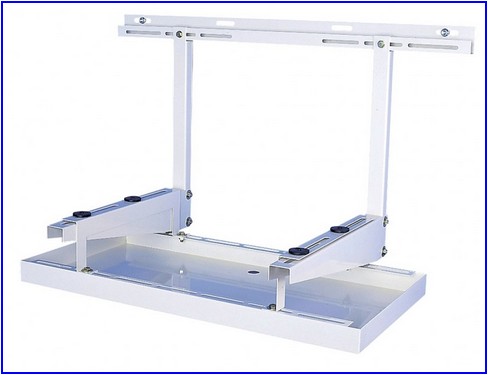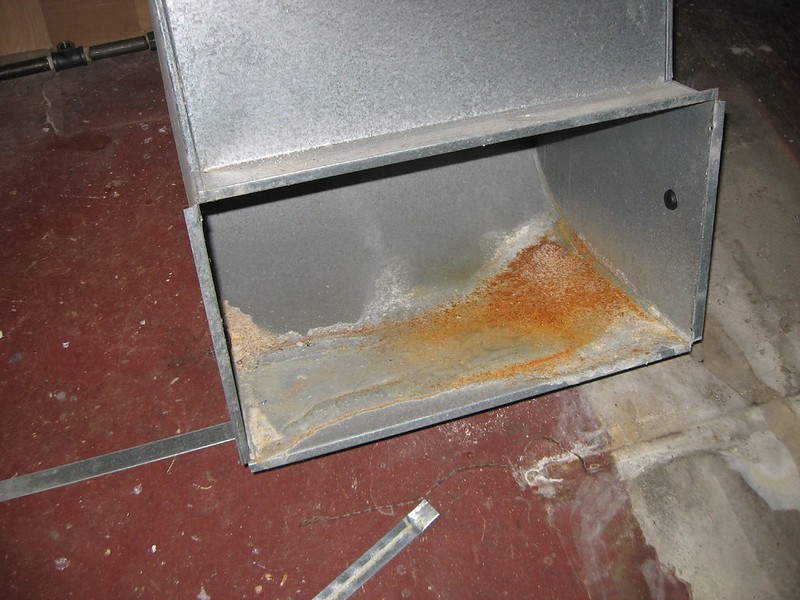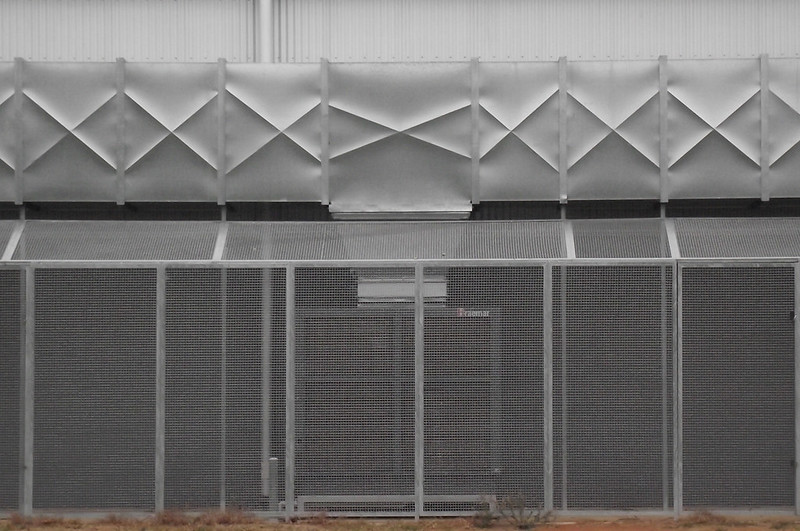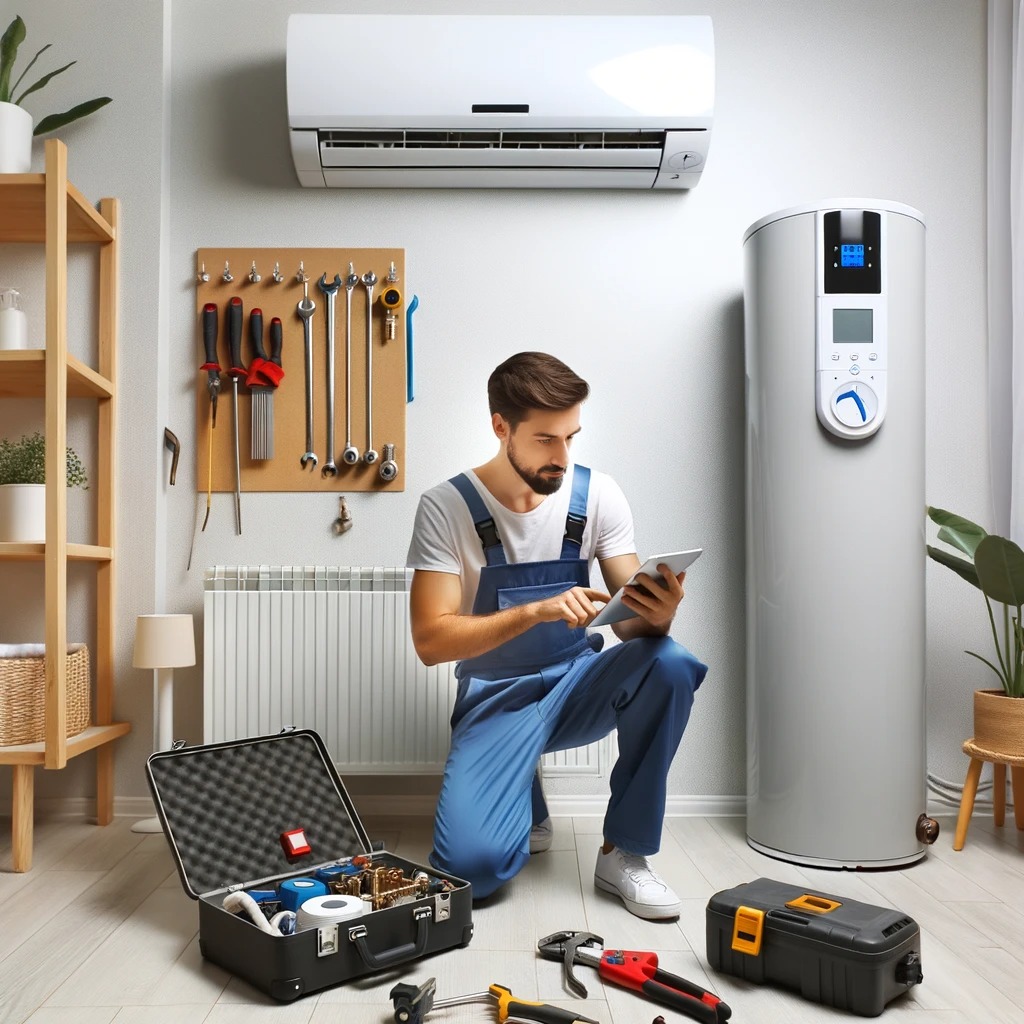Introduction
- Introduce the topic and its relevance.
- Present a brief overview of common concerns regarding can air duct cleaning cause damage.
- State the purpose of the article: to explore whether air duct cleaning can cause damage and how to mitigate risks.
Section 1: Understanding Air Duct Cleaning
- Explain what air duct cleaning entails.
- Discuss the importance of regular air duct cleaning for health and efficiency.
- Mention common methods and tools used in air duct cleaning.
Section 2: Potential Risks and Causes of Damage
- Delve into how improper air duct cleaning techniques can cause damage.
- Discuss common issues like duct perforation, dislodgement of debris, and damage to HVAC components.
- Present expert opinions and case studies.
Section 3: Safe Air Duct Cleaning Practices
- Outline best practices for safe and effective air duct cleaning.
- Discuss the role of professional services and certification.
- Emphasize the importance of proper equipment and techniques.
Section 4: DIY vs Professional Air Duct Cleaning
- Compare DIY methods to professional services.
- Discuss the risks associated with DIY methods and the advantages of professional services.
- Provide tips for homeowners considering DIY duct cleaning.
Section 5: Preventing Damage During Air Duct Cleaning
- Offer advice on how to prevent damage during the cleaning process.
- Discuss the importance of regular maintenance and inspections.
- Suggest questions to ask service providers before hiring them.
Conclusion
- Summarize key points made in the article.
- Reiterate the importance of safe air duct cleaning practices.
- Encourage readers to seek professional advice and services.

Can Air Duct Cleaning Cause Damage? Understanding the Risks and Best Practices
In the quest for a cleaner, healthier living environment, can air duct cleaning cause damage has emerged as a critical maintenance task for homeowners and businesses alike. This process, aimed at removing dust, allergens, and other contaminants from heating, ventilation, and air conditioning (HVAC) systems, is often touted for its ability to improve indoor air quality and enhance the efficiency of HVAC units. However, amidst its growing popularity, a crucial question arises: Can air duct cleaning cause damage?
This question is not only relevant but also significant, especially considering the intricate and often delicate nature of HVAC systems. While the benefits of air duct cleaning are widely acknowledged, there is a parallel concern about the potential risks associated with improper cleaning practices. These concerns stem from reports and anecdotes of ductwork being damaged during cleaning, leading to decreased system efficiency, increased energy costs, and even costly repairs.
The answer to whether air duct cleaning can cause damage is not straightforward. It hinges on various factors, including the methods used, the expertise of the service provider, and the condition of the ducts themselves. In this comprehensive guide, we aim to explore every facet of this issue. We will look into the process of air duct cleaning, understand the methodologies employed, and examine how and why these might lead to damage if not properly executed.
Furthermore, this article will delve into the preventive measures that can be taken to avoid such risks. From highlighting the importance of choosing the right service provider to understanding the role of regular maintenance, we will cover all the aspects to ensure that your air duct cleaning experience is safe, effective, and beneficial.
Our journey will also take us through the perspectives of industry experts, who will shed light on the best practices in air duct cleaning. We will investigate common mistakes to avoid and learn how to discern between myths and facts in this field. This guide is not just about airing the concerns but also about providing practical solutions and tips to help you make informed decisions.
Whether you are a homeowner, a property manager, or simply someone interested in the nuances of HVAC maintenance, this article is designed to equip you with comprehensive knowledge about air duct cleaning. By the end of this guide, you will have a clearer understanding of how to approach air duct cleaning, ensuring that it contributes positively to your indoor air quality without compromising the integrity of your HVAC system.
Stay tuned as we embark on this informative journey, dissecting the complexities of can air duct cleaning cause damage and unraveling the truth behind the critical question: Can air duct cleaning cause damage?
Section 1: Understanding Air Duct Cleaning
What is Air Duct Cleaning?
At its core, air duct cleaning involves the removal of dust, debris, and contaminants from the ductwork of heating, ventilation, and air conditioning (HVAC) systems. This process is not just about cleaning the air ducts themselves but encompasses various components of the HVAC system, including supply and return air ducts, registers, grilles, diffusers, heat exchangers, cooling coils, and condensation drain pans.
The necessity of air duct cleaning stems from the fact that over time, these components can become heavily laden with particles of dust, pollen, and other debris. In some cases, they may even harbor mold, bacteria, and other harmful microorganisms. If not addressed, these contaminants can significantly degrade the air quality within a building, posing health risks to inhabitants, particularly those with allergies or respiratory issues.
Importance of Regular Air Duct Cleaning
Regular air duct cleaning is crucial for several reasons. Primarily, it improves the indoor air quality by eliminating allergens and irritants. This aspect is particularly important in environments where occupants may have respiratory problems or compromised immune systems. Additionally, clean air ducts enhance the efficiency of the HVAC system. When ducts are clogged with debris, the system has to work harder to circulate air, leading to increased energy consumption and higher utility bills. Regular cleaning helps maintain the system’s efficiency and can prolong its lifespan. Can air duct cleaning cause damage?
Common Methods and Tools Used
Air duct cleaning is a specialized task that requires specific tools and techniques. The most common method involves using high-powered vacuum cleaners designed to suction dust and debris from within the ducts. This vacuuming process is typically complemented by the use of brushes and other tools to dislodge stubborn dirt and debris.
One popular method is the “push-pull” technique. Here, a powerful vacuum is attached to one end of the duct system, creating a strong airflow through the ducts. As this occurs, various agitation devices, like brushes or compressed air tools, are used at the other end of the system to dislodge debris, which is then pulled toward the vacuum.
Another method, known as the “rotary brush system,” involves a rotating brush attached to a long hose. As the brush spins, it scrubs the inner walls of the ducts, loosening dust and debris, which is then vacuumed up by a powerful extraction unit.
It’s important to note that air duct cleaning should always be performed by trained professionals. Inexperienced handling or use of improper tools can cause damage to the ducts, leading to leaks and reduced system efficiency. Professionals not only have the right tools but also understand the intricacies of different HVAC systems and can adjust their cleaning methods accordingly.

Section 2: Potential Risks and Causes of Damage in Air Duct Cleaning
Understanding the Risks Involved
While air duct cleaning is vital for maintaining healthy indoor air quality and HVAC system efficiency, it’s not without its risks. These risks predominantly arise from improper cleaning techniques, inadequate knowledge of HVAC systems, and the use of inappropriate tools. Understanding these risks is crucial for homeowners and facility managers to make informed decisions about air duct maintenance.
Common Issues Leading to Damage
- Duct Perforation and Tears: One of the most significant risks during duct cleaning is the perforation or tearing of the ductwork. This often occurs when overly aggressive cleaning techniques are used, or when the ducts are old and fragile. Metal ducts can suffer from punctures, while flexible ducts are prone to tears. These damages can lead to air leaks, reducing the efficiency of the HVAC system and increasing energy costs.
- Dislodgement of Debris and Blockages: Inadequate cleaning methods can cause more harm than good by dislodging large chunks of debris without effectively removing them. This can lead to blockages in the HVAC system, impeding airflow and potentially causing damage to critical components like the blower fan.
- Damage to HVAC Components: Certain components of the HVAC system, such as the cooling coils and fan blades, are delicate and can be easily damaged if not handled correctly during the cleaning process. Such damage can impair the system’s performance and may require costly repairs.
Case Studies and Expert Opinions
To substantiate these risks, the section can include case studies illustrating instances where improper duct cleaning led to significant issues. Additionally, expert opinions from HVAC professionals can provide insights into the frequency and severity of such incidents, adding credibility to the discussion.
The Role of Inexperienced Service Providers
A significant factor contributing to duct cleaning damage is the involvement of inexperienced or unqualified service providers. These individuals or companies might use incorrect tools or apply excessive force, unaware of the potential damage they are causing. This highlights the importance of selecting a reputable and experienced service provider for air duct cleaning.
The Impact of Neglected Maintenance
Another angle to consider is how the condition of the ductwork prior to cleaning can influence the risk of damage. Ducts that have been neglected for years are more susceptible to damage during cleaning. Regular inspections and maintenance can help identify potential weak points in the duct system before they are exacerbated by cleaning processes.
Section 3: Safe Air Duct Cleaning Practices
Emphasizing the Importance of Professional Services
The cornerstone of safe air duct cleaning lies in the hands of professional service providers. These experts possess the necessary knowledge, experience, and tools to perform the job effectively without causing damage. When selecting a professional service, it’s important to consider their credentials, experience, and reviews from previous customers. Look for certifications from recognized industry organizations, which indicate that the provider adheres to established standards and practices in HVAC system cleaning.
The Role of Proper Equipment and Techniques
- Advanced Cleaning Equipment: Professional air duct cleaners use specialized equipment designed for this task. This includes high-powered vacuum systems with HEPA filters, which ensure that dust and debris are contained and not released back into the home. These systems are often truck-mounted, providing more power than portable units.
- Customized Cleaning Techniques: Professionals understand that different ductwork materials and designs require different cleaning approaches. For instance, metal ducts might withstand more rigorous cleaning methods, while flexible ductwork requires a gentler approach. Skilled technicians will assess the condition and type of ductwork before choosing the most suitable cleaning method.
Best Practices for Safe and Effective Air Duct Cleaning
- Initial Inspection: A thorough inspection of the ductwork should precede any cleaning process. This helps identify any existing damage, contamination levels, and the best cleaning approach. Inspections may involve visual checks and the use of cameras to assess hard-to-reach areas.
- Controlled Agitation and Cleaning: To loosen debris without damaging the ducts, controlled agitation techniques such as soft-bristled brushes or compressed air tools are used. The key is to dislodge the contaminants gently so they can be effectively removed by the vacuum system.
- Sealing and Repairing Damages: In cases where minor damage is detected during the inspection, professional cleaners can often repair and seal these areas, preventing future issues and ensuring the integrity of the ductwork.
Avoiding Common Pitfalls
Educating homeowners on common pitfalls in air duct cleaning is also crucial. This includes avoiding excessive use of chemical biocides or sealants, which are sometimes marketed as necessary additions to duct cleaning but can actually cause more harm than good. Homeowners should be wary of services that offer a “one size fits all” approach or significantly lower prices than the industry standard, as these may be indicators of substandard service.
Continuous Education and Training
The field of HVAC system maintenance is constantly evolving, with new technologies and methods emerging. Professionals in this field should engage in continuous education and training to stay abreast of the best practices and latest developments in duct cleaning.

Section 4: DIY vs Professional Air Duct Cleaning
The Appeal and Risks of DIY Air Duct Cleaning
DIY air duct cleaning has gained popularity among homeowners looking to save money or take a hands-on approach to home maintenance. It typically involves the use of home vacuum cleaners, DIY brushes, and other readily available tools. While this might seem cost-effective, there are significant risks:
- Limited Effectiveness: Household vacuum cleaners lack the power of professional equipment, leading to less effective removal of debris and contaminants.
- Potential for Damage: Without proper knowledge and tools, there’s a high risk of damaging the ductwork. This can result in tears, disconnections, or even damage to the HVAC system itself.
- Health Risks: Improper cleaning can disturb and release contaminants into the home, worsening indoor air quality and posing health risks.
Advantages of Professional Services
Professional air duct cleaning services offer several advantages over DIY methods:
- Expertise and Experience: Professionals have the training and experience to assess and clean ducts effectively, minimizing the risk of damage.
- Advanced Equipment: Professional services use high-powered vacuum systems and specialized tools designed specifically for duct cleaning.
- Comprehensive Cleaning: Professionals are more likely to clean the entire HVAC system thoroughly, including components that are difficult for amateurs to reach, like coils and blowers.
Comparing Costs and Benefits
While DIY might seem cheaper upfront, it’s important to consider the long-term costs. Potential damage from DIY methods can lead to expensive repairs, and incomplete cleaning can affect HVAC efficiency, increasing energy bills. In contrast, professional cleaning, while more costly initially, can offer peace of mind, ensure thorough cleaning, and potentially extend the life of the HVAC system.
Tips for Homeowners Considering DIY
For those still considering the DIY route, the following tips can help reduce risks:
- Educate Yourself: Understand your HVAC system and the cleaning process. Research and follow guidelines from reputable sources.
- Use Appropriate Tools: Avoid using harsh or inappropriate tools that can damage the ductwork.
- Safety First: Wear protective gear, like masks and gloves, to avoid exposure to dust and other contaminants.
Making an Informed Choice
The decision between DIY and professional duct cleaning should be based on a careful consideration of the homeowner’s skills, the complexity of their HVAC system, and their willingness to risk potential damage for cost savings. In most cases, especially for extensive or complex systems, the safer and more effective choice is to opt for professional cleaning services.
Section 5: Preventing Damage During Air Duct Cleaning
The Importance of Preventive Measures
Preventing damage during air duct cleaning is not only about protecting the physical integrity of the HVAC system but also about maintaining its efficiency and the quality of indoor air. Taking proactive steps can save homeowners from costly repairs and long-term issues that might arise from negligent cleaning practices.
Key Strategies for Damage Prevention
- Choosing the Right Service Provider: The first step in preventing damage is to select a qualified and experienced air duct cleaning service. Look for providers with certifications from recognized industry bodies, such as the National Air Duct Cleaners Association (NADCA). Check their history, reviews, and ask for references to ensure they have a track record of safe and effective cleaning.
- Understanding Your HVAC System: Different types of HVAC systems require different cleaning approaches. Homeowners should have a basic understanding of their system type and any specific maintenance needs. This knowledge can be crucial in discussing the cleaning process with service providers and ensuring that they use the appropriate methods.
- Regular Inspections and Maintenance: Regularly inspecting and maintaining the HVAC system can help identify potential issues before they become problematic during cleaning. This includes checking for signs of wear and tear, ensuring filters are replaced regularly, and looking out for any unusual noises or performance issues.
- Clear Communication with Service Providers: Clear communication is key. Homeowners should discuss their concerns and expectations with the cleaning service. Ask questions about the cleaning process, the tools and methods to be used, and how they plan to protect the ductwork and other components from damage.
- Overseeing the Cleaning Process: While it’s not necessary to micromanage the professionals, being present and observant during the cleaning process can be beneficial. This allows homeowners to raise any immediate concerns and ensures that the cleaning is carried out responsibly.
Questions to Ask Service Providers
Before hiring a service provider, homeowners should ask several key questions:
- What is the scope of the cleaning process? Ensure they plan to clean the entire system, including coils and fans.
- What equipment and techniques will be used? This helps gauge whether they are up-to-date with the best practices in duct cleaning.
- How will they protect the ductwork and other components during cleaning? Understanding their safety measures can provide peace of mind.
Post-Cleaning Evaluation
After the cleaning is completed, a thorough evaluation is recommended. This could involve a visual inspection and, if necessary, a test run of the HVAC system to ensure everything is functioning properly. Any concerns should be addressed immediately with the service provider.

Conclusion: Navigating the Path to Safe and Effective Air Duct Cleaning
As we conclude our comprehensive exploration into whether air duct cleaning can cause damage, it’s clear that this maintenance task, while essential, comes with its nuances and considerations. The journey through understanding the cleaning process, acknowledging the potential risks, and learning about the best practices and preventive measures offers a roadmap for safe and effective air duct cleaning.
The key takeaway from our discussion is the balance between the necessity of air duct cleaning and the importance of executing it correctly. Regular cleaning of air ducts is crucial for maintaining good indoor air quality and ensuring the efficiency of your HVAC system. However, it’s equally vital to approach this task with caution and awareness. The potential risks associated with improper cleaning techniques highlight the need for expertise and precision in this task.
We’ve seen that professional air duct cleaning services, equipped with the right tools and knowledge, stand as the safest option. Their ability to navigate the complexities of various HVAC systems and employ suitable cleaning methods minimizes the risk of damage. For those considering the DIY route, we emphasize the importance of thorough research, understanding the limitations of household tools, and prioritizing safety and effectiveness over mere cost-saving.
The responsibility of homeowners doesn’t end with hiring a professional service; it extends to being informed, vigilant, and proactive. Regular inspections, clear communication with service providers, and a keen eye during the cleaning process can go a long way in safeguarding your HVAC system.
In the end, air duct cleaning should not be a source of worry but a well-planned and executed part of your home maintenance routine. By choosing the right professionals, understanding the process, and taking preventive measures, you can ensure that your air duct cleaning enhances your home’s air quality without leading to unwanted damage.
Remember, a clean and well-maintained HVAC system is not just about comfort; it’s an investment in the health and well-being of you and your loved ones. So, as you embark on this necessary task, equip yourself with the knowledge and partners who can help you achieve this goal safely and effectively.



